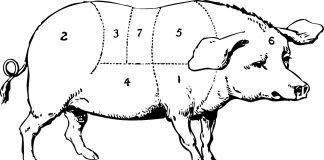 |
|
| Issue #100 • July/August, 2006 |
In the last issue I provided the initial steps required to design your remote cabin or retreat for off-grid power. We also reviewed the types of lighting, heating, and water pumping systems that can dramatically reduce these loads. Now that you have determined your own power requirements, let’s review the different ways you can supply this power.
Basic battery system
If you have ever owned a small boat or RV, you know that it is fairly easy to power a few 12-volt DC lighting fixtures, a radio, and a water pressure pump using a marine deep-cycle battery. For a very basic cabin system, you can install a similar 12-volt DC system using fluorescent lights in each room wired to a 12-volt deep-cycle sealed battery. The battery should be connected to this system using properly rated DC fuses and a heavy-duty quick disconnect. A second battery stored in your vehicle is connected to the alternator system using a battery isolator and quick-disconnect plug.
|
The battery isolator is a low-cost “check valve” that allows the vehicle’s alternator to safely charge the spare battery without allowing its power to flow back to the vehicle’s electrical system during starting or heavy loads. When driving around prior to a weekend visit and during the trip to the remote cabin, the spare battery is brought to full charge. As soon as you arrive, the fully charged spare deep-cycle battery is “switched” with the cabin battery using the quick-disconnect plugs.
This system does require physical effort, as a deep-cycle battery is fairly heavy and should only be handled with the proper personal safety equipment. However, this system does guarantee the cabin’s battery will be fully charged when you begin a weekend of fishing or hunting.
Solar-charged battery
Adding a solar module to your basic battery-powered system that can be mounted on a south-facing roof or nearby pole will eliminate the need to switch batteries. Although a single solar module has limited power output, it will provide some charging each day while you are away and no electrical loads are being used, then by the weekend your battery should be fully recharged.
Figure 2 shows this basic solar-charged battery wiring layout. Note the solar charge controller wired between the solar module and the 12-volt deep-cycle battery. This device is required to monitor the charging process to prevent battery over-charging, and to maximize the charging current of the solar module.
|
For longer cabin visits requiring more battery capacity, substitute two 6-volt golf cart deep-cycle batteries wired in series to provide 12 volts. These batteries are designed for heavy-discharge cycling, and each will store about 1 kWh of useful energy.
Inverter-based system
The same 12-volt DC electrical system, dual 6-volt batteries, and solar module can also power several small 120-volt loads including a radio, CD player, and laptop computer. By adding a small 400 to 800 watt inverter and fuse as shown in Figure 3, you can easily power these smaller-wattage AC loads. When using these low-cost inverters, it’s very important to turn them off when not actually in use, as most have a fairly large standby loss and will drain your batteries even when no loads are being supplied.
Large inverter-based systems add convenience
To keep costs low, many remote cabin builders start out with one of the basic power systems I have just described. What usually happens after the first year is the need to provide power for longer and longer visits, or the desire to add more creature comforts than a small 12-volt DC system can handle.
For example, the first major appliance most people want to add is a microwave oven. These require a much larger and higher quality inverter, even though cooking times are only a few minutes. A typical kitchen-size microwave will require between 1,200 and 1,500 watts of 120-volt AC power. In addition, most low cost inverters are “modified” sine-wave models, and their output voltage looks like “stair steps” instead of a smooth 60-cycle alternating sine-wave when viewed on test equipment.
|
Although a modified wave-form output is acceptable to power most lights and audio-video equipment, some appliances like a microwave oven will have reduced output, and some equipment like laser printers and light dimmers will be permanently damaged when connected to modified sine-wave inverters.
When you are ready to join the true off-grid community, you will want to purchase a true sine-wave 2 to 4 kW inverter from Xantrax or Outback. These bullet-proof inverters are designed to provide years of very reliable off-grid service and include all kinds of electronic safety features. Most models also include a built-in multi-stage high-capacity battery charger that can quickly recharge large battery banks when generator or grid power is available.
Battery-based generator systems without solar
An off-grid cabin does not absolutely need to include solar modules for battery charging if your cabin’s location is heavily shaded by trees or nearby mountains. For these applications, many systems are generator-based, using a generator to charge a battery bank and a battery-powered sine-wave inverter to power all 120-volt AC loads as shown in Figures 4 and 5.
By using four to eight “L-16” size deep-cycle 6-volt batteries with a high-quality 2 to 4 kW inverter and a 6 to 8 kW generator, you can run the generator a few hours when you first arrive to recharge the large battery bank using the inverter’s built-in high-capacity battery charger. Inverters larger than 2,000 watts (2 KW) are normally designed for 24 or 48 volt input, so the number of batteries you require and how they are wired is determined by the inverter.
|
Since the generator needs to operate only a few hours to re-charge the battery bank, you can shut it down each night and let the inverter take over powering your electrical loads using stored battery power until the generator is required again. Depending on the size of your loads and battery bank, it may be possible to go several days before running the generator again. I designed a system like this for an attorney wanting a weekend retreat for his family. Refer to Backwoods Home Magazine Issue #83, dated September/October 2003, titled Battery Powered Retreat for a detailed description of this type of system.
Larger-capacity and higher-cost generators are available that use propane fuel. This is ideal for occasional-use cabins, as gasoline fuel goes “stale” after a few months, making a generator very difficult to start.
A propane-fueled generator can also use the same propane storage tank supplying a propane cooking stove or water heater. If you install a large 500 or 1,000-gallon propane tank, your small system may only need to be filled once each year. If you are considering a generator-based system, keep in mind that a battery charger or an inverter operating in battery-charging mode use the “peaks” of the voltage waveform from the generator. Most small low-cost generators lower their voltage under load, so your battery recharging process can be much longer even if all other electrical loads are off.
Those $300 to $500 portable 3,600-RPM generators sold for emergency backup power or to operate a few power tools at a construction site will not last long in off-grid power systems, as they are only designed to run a few hours each year, not a few hours every week. A quality propane-fueled 8 to 10 kW generator will cost more than $2,500 depending on brand, and most of the generators we use for permanent off-grid homes cost more than $5,000 due to their lower 1,800-rpm long-life construction.
Other systems
There are some locations in this country that offer excellent “free” energy to power a remote cabin that does not involve solar modules on your roof. If your proposed off-grid cabin or retreat will be located on the top of a mountain, you may be able to generate power using a modern wind turbine.
There are some excellent low-maintenance wind turbines that are very easy to install, with the smallest starting around 400 watts. Several manufacturers offer models in the 800 to 1,200-watt range that are still considered “do-it-yourself” units. The taller the tower, the more constant the wind will be, with 35 feet as the minimum recommended tower height.
|
Like wind turbines, water turbines are now available in do-it-yourself packages that are easy to install if you have some piping skills. The secret to hydropower is feet of fall, not width of the creek or river. A small creek that flows year-round and drops 10 to 20 feet when traveling from one side of your property to the other, offers far greater generating capacity than a very large river with very little change in elevation. Since a hydro-system may be able to generate power 24 hours per day, the only real downside is keeping the upstream intake pipe free of debris and to prevent freezing in winter.
Although there may be restrictions or laws blocking any construction on your stream or river, most hydro-turbines require only a 3 to 4” PVC flexible pipe lying on the ground leading down from a screened opening several hundred feet upstream. Most small-scale wind turbines and hydro turbines are designed to wire into your battery-powered system just like a solar module, so you can follow the same basic wiring examples I have provided for these systems, also.
Summary and safety
The basic battery-based power systems described in this 2-part article can bring “civilization” to any remote cabin or retreat, and I have also used the same designs to power below-grade storm and emergency shelters. However, if you are not familiar with working around high amperage batteries, you may want to enlist the help of an electrician, as even a single 6-volt deep-cycle battery can melt the end off a large screwdriver or heavy gauge wire if you are not careful!
Please also note that at every point of connection to the positive (+) battery terminal, I have used a DC-rated fuse. On small systems, you may be able to use blade-type automotive fuses, but these do not meet building code for use in normal house wiring. Square D’s type “QO” line of AC circuit breakers are UL-approved for use in 12 and 24-volt DC power systems, but not 48-volt DC systems, which require much larger DC-rated fuses and circuit breakers. Both Xantrex (www.xantrex.com) and Outback (www.outbackpower.com)

offer several different sizes of AC inverters that can be ordered pre-wired with all AC and DC circuit breakers and fuses, and require only a single connection to the battery bank and your cabin’s electrical load panel. Both firms also offer power panels with pre-wired solar charge controllers and system status meters, and you may find these easier to install than ordering individual components from different vendors.
References
BHM’s back issues listed above have individual articles that you may find very helpful in constructing an off-grid power system. If you no longer have access to these issues, I strongly recommend purchasing the Alternative Energy CD ROM Anthology.
[weaver_widget_area id=’articles_about_yago’ class=’text3′]



















